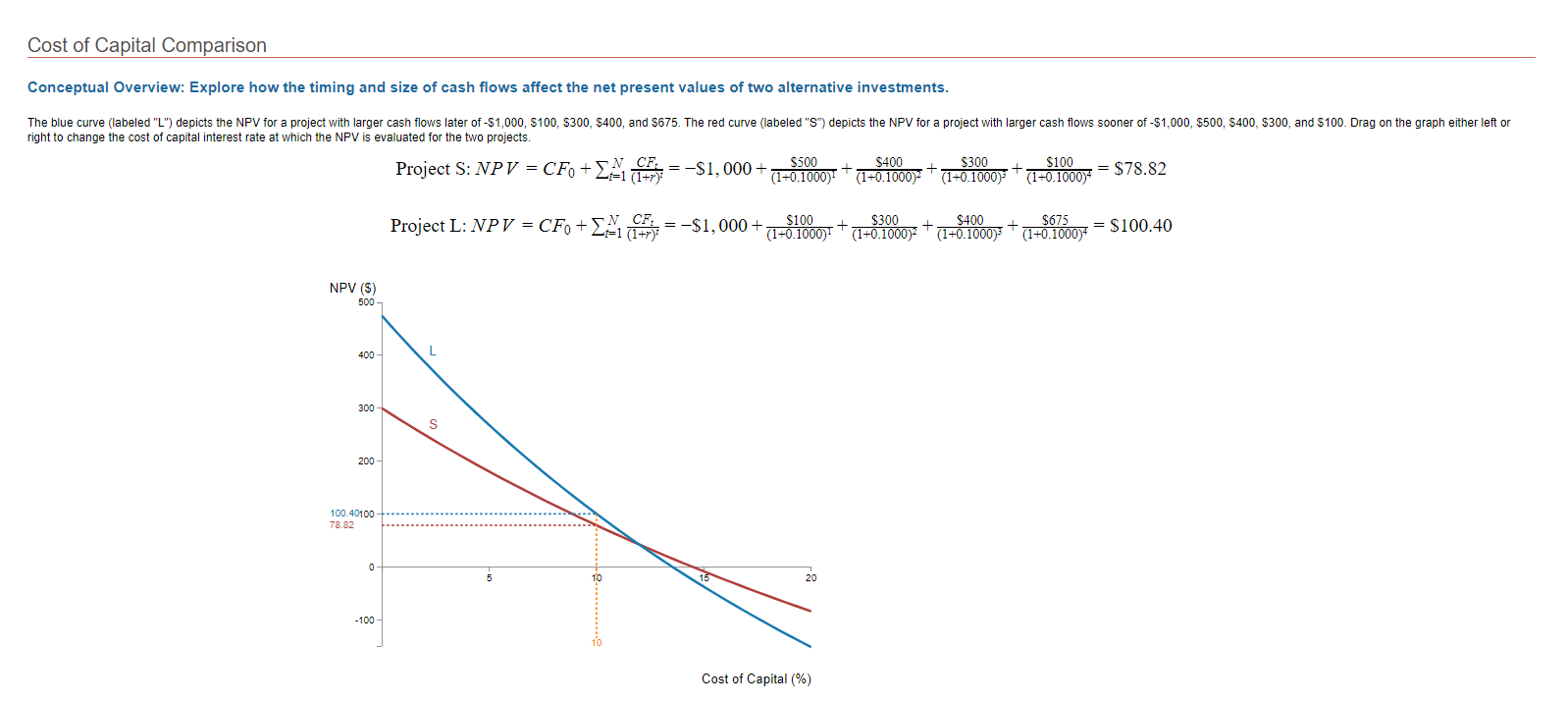Question
1a. What is the approximate cost of capital for which the two cash flows are about equal? 10% 12% 13.5% 14.5% 1b. What is the

1a. What is the approximate cost of capital for which the two cash flows are about equal?
- 10%
- 12%
- 13.5%
- 14.5%
1b. What is the approximate internal rate of return (IRR) for the Project L cash flow?
- 10%
- 12%
- 13.5%
- 14.5%
1c. What is the approximate internal rate of return (IRR) for the Project S cash flow?
- 10%
- 12%
- 13.5%
- 14.5%
1d. What is the name for the point at which the two projects' NPVs are equal?
- Inflection point
- Equal NPV rate
- Crossover rate
- There is no special name for this point
1e. At a cost of capital less than the point at which they cross, which project will have the higher NPV?
- Project S
- Project L
- Project S and L will have the same NPV
- Cannot determine
1f. At a cost of capital greater than the point at which they cross, which project will have the higher NPV?
- Project S
- Project L
- Project S and L will have the same NPV
- Cannot determine
1g. The internal rate of return (IRR) is the point at which a project's NPV equals 0. If the cost of capital were 5% (move the slider so that is the case), then
- Project S is the better project because it has the higher IRR.
- Project L is the better project because it has the higher NPV.
- It depends because there is a conflict between IRR and NPV.
1h. If the cost of capital was greater than the point at which the two projected NPVs are equal, then
- It depends because there is a conflict between IRR and NPV.
- There is no conflict because Project S has both a higher NPV and a higher IRR than Project L.
- There is no conflict because Project L has both a higher NPV and a higher IRR than Project S.
Step by Step Solution
There are 3 Steps involved in it
Step: 1

Get Instant Access to Expert-Tailored Solutions
See step-by-step solutions with expert insights and AI powered tools for academic success
Step: 2

Step: 3

Ace Your Homework with AI
Get the answers you need in no time with our AI-driven, step-by-step assistance
Get Started


